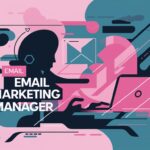Struggling to increase your conversion rate from free trials to paid users? You're not alone. Many businesses face the challenge of converting trial users into loyal subscribers. An effective way to enhance these conversion rates lies within the power of well-crafted emails. That's where free trial email examples come into play—they're pivotal in nudging users along the customer journey, helping them realize the full value of your product.
You’ll Learn:
- Why free trial emails matter
- Key components of a successful free trial email
- Detailed examples of effective free trial email sequences
- Common pitfalls to avoid
- FAQs regarding free trial emails
Why Free Trial Emails Matter
Free trial email sequences are essential in transforming a curious onlooker into a dedicated user. When someone signs up for a free trial, they’re expressing interest, but interest alone doesn’t guarantee a subscription. The objective is to guide them through understanding the benefits and features of your product before their trial period lapses.
The Impact of Effective Emails
Research shows that targeted and well-crafted emails can increase conversion rates significantly. According to a study by MarketingSherpa, segmented and targeted emails generate 58% of all revenue. Therefore, every email you send during the free trial period should be strategically planned and meticulously crafted.
Key Elements of Successful Free Trial Emails
1. Personalized Greetings
Including the recipient's name in your email can significantly increase engagement. Personalized greetings make the recipient feel recognized and valued, which can lead to improved open and click-through rates.
2. Clear Value Proposition
Communicate the benefits and unique selling points of your product. It's crucial to remind users why they signed up in the first place and what they stand to gain by engaging with your product during the free trial period.
3. Call-to-Action (CTA)
Strong CTAs are non-negotiable when it comes to effective emails. They should be prominent, action-oriented, and clear. Whether it's exploring a new feature or contacting support, the CTA should lead the user to the next logical step in their journey.
4. Timely Follow-Ups
Don't wait until your user's trial is almost expired to follow up. Regular check-ins can provide timely reminders and help users maximize their trial experience. Make sure your emails are well-timed without overwhelming the recipient.
Effective Free Trial Email Sequences
Giving you a series of effective free trial email examples, let's look at a potential sequence:
Welcome Email
Example:
- Subject Line: Welcome to [Your Product]! Let's Get Started
- Excerpt: "Hi [Name], welcome to your trial at [Your Company]. We’re thrilled to have you on board. Here’s a quick guide to get you started…"
Feature Highlight Email
Example:
- Subject Line: Discover Why [Your Product] Stands Out
- Excerpt: "Hello [Name], did you know [Your Product] offers [Unique Feature]? Thousands of users have found this particularly useful because…"
Engagement Email
Example:
- Subject Line: You're Making Great Progress!
- Excerpt: "Hi [Name], we’ve noticed you've tried some great features this week. Keep it up… and here’s something you may have missed."
Expiry Reminder Email
Example:
- Subject Line: Your Trial is Ending Soon—Don’t Miss Out!
- Excerpt: "Hi [Name], time flies when you’re exploring great features. Don’t miss out on unlocking your full potential with [Your Product]. Here's how you can continue…"
Conversion Push Email
Example:
- Subject Line: Special Offer Just for You, [Name]
- Excerpt: "Hi [Name], we hope you’ve enjoyed exploring [Your Product]. As a thank you, we're offering you a special discount to continue using our service…"
Common Pitfalls in Free Trial Emails
Overloading Information
While it's crucial to inform users about product features, it's important to avoid overwhelming them with too much information. Focus on a few key elements per email.
Ignoring Feedback
Actively seeking and responding to feedback can transform a user's trial experience. Offering a survey or requesting direct feedback can show you care about their experience and are willing to make improvements.
FAQs
1. How often should I send free trial emails?
The frequency depends on your product and audience but aim for strategic time points like signup, key engagement moments, and trial expiration. Usually, 3-5 emails over the trial period are effective.
2. What should the focus be in a free trial email?
Each email should have a specific focus, like onboarding, engagement, or conversion. Ensure a clear CTA and value proposition relevant to that focus.
3. Can I automate these emails?
Absolutely. Utilizing marketing automation tools like Mailchimp or ActiveCampaign can ensure timely delivery and personalization without manual effort.
Conclusion
Implementing well-structured free trial email examples not only enhances user experience but significantly boosts the likelihood of conversion from free users to paying customers. By integrating personalization, clarity, and timing into your emails, you can effectively engage potential clients and demonstrate the full value of your product. This strategic approach is your bridge from free trials to lasting customer relationships.
Summary
- Importance of effective free trial emails in increasing conversion rates.
- Key elements: personalization, clear value, and strong CTA.
- Example email sequences guide users through trial experiences.
- Avoid information overload and be open to user feedback.
- Common FAQs about frequency, focus, and automation of emails.
Using these insights, you can craft emails that not only capture attention but foster long-term engagement and loyalty.



